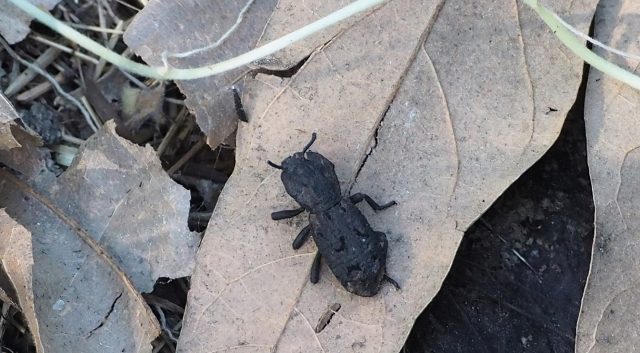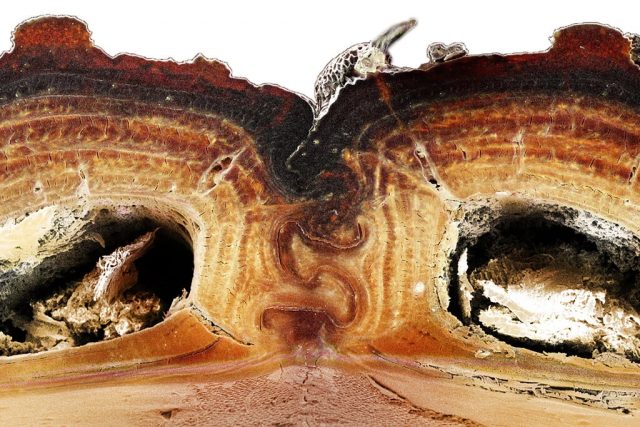
Scientists are not always great at naming things. Amazingly, you can often pick up on this fact even if you don’t speak Latin. Consider the joys of studying the moth Gnorimoschema gallaesolidaginis, the fossil fungus Cryptodidymosphaerites princetonensis, or the amphipod *deep breath* Rhodophthalmokytodermogammarus cinnamomeus. At the microscopic level, we have the abysmally named “Sonic hedgehog” gene. SHH, as its abbreviated, plays a critical role in normal embryo development. That means doctors face the joyful task of telling parents their unborn child is non-viable due to a problem with its “Sonic hedgehog” gene expression because the guy who discovered it named it after a game magazine his partner brought home.
But the diabolical ironclad beetle (nosoderma diabolicum)? Now that’s a name. And the little bug lives up to it. It has the unusual distinction of being one of the very few bugs that can survive being run over by a Toyota Camry — twice. Thanks to evolution, the bug can survive being crushed by roughly 39,000 times its own body weight, or roughly the equivalent of a human bearing up under the weight of 125 blue whales stacked on top of each other. (The question of how one stacks 125 blue whales on top of each other is best left to the imagination.)
Biologically, the beetle uses a number of proteins designed to enhance its durability. Its exoskeleton evolved from a pair of forewings, stretching across the creature’s back and hooking to a second structure on its ventral side. Internally, the structure of the creature resembles a Russian nesting doll:

Image by David Kisailus
“Having these layers helps toughen the joint,” Talia Moore, a roboticist and evolutionary biologist at the University of Michigan who wasn’t involved in the study, told The New York Times. “It allows some of the stress to be dissipated.” Any attempt to crush the beetle instead redistributes the force across it, with the plates bowing outwards and flexing rather than shattering. When the two halves of the exoskeleton meet, they interlock together like a jigsaw puzzle, providing additional strength. The creature is both impact-resistant and crush-resistant, implying that its predators might be confined to the wild packs of M1 Abrams tanks that roam the deserts of the Western United States.
Scientists’ interest in the diabolical ironclad beetle is more than academic. This creature has evolved a method of resisting force that puts our best material science and engineering to shame. If we can duplicate its structural engineering, we could use it in everything from aeronautics to construction. It might even be useful in certain types of body armor or other protective gear. If it’s fragile or smashes like a large grape under the weight of even one blue whale (nominal weight 110,000 – 330,000 lbs (50,000 – 150,000 kg), tech derived from the diabolical ironclad beetle might protect it.
Feature image by J. Maughn.
Now Read:
- Scientists Found an Ancient Tectonic Plate Buried Deep Inside the Earth’s Mantle
- Researchers Make ‘Super-Tomatoes’ With Genetically Stressed Root Grafts
- NASA’s OSIRIS-REx Spacecraft Successfully Boops Asteroid Bennu
